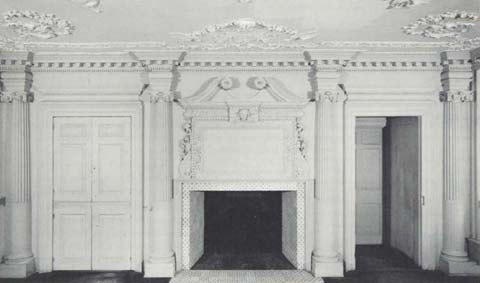
First-floor southeast parlor, Philipse Manor, Yonkers, New York, 1745-1755. (New York State Office of Parks, Recreation, and Historic Preservation; photo, Gavin Ashworth.)
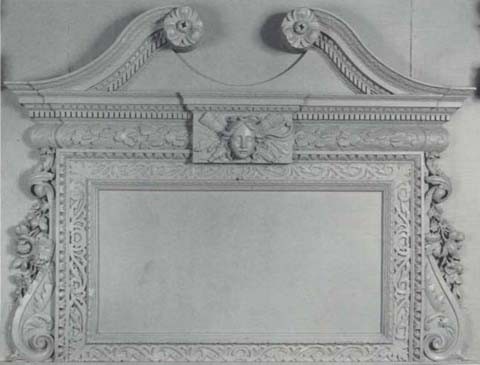
Detail of the chimneypiece illustrated in fig. 1 (Photo, Gavin Ashworth.)
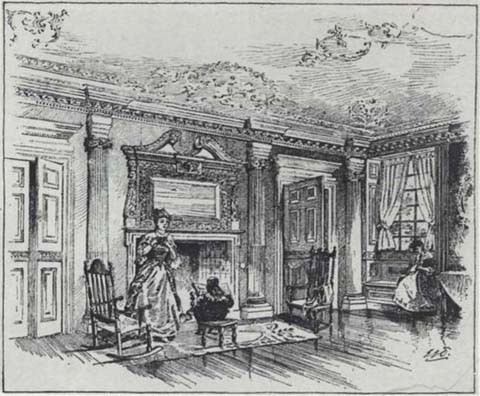
Engraving of the first-floor southeast parlor, Philipse Manor, from Frank Leslie's Illustrated Newspaper (1882). (Collection of the Hudson River Museum of Westchester, Yonkers, New York; photo, John Kennedy.)
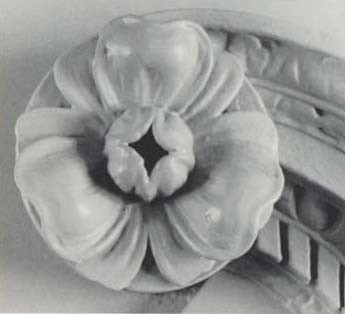
Detail of the rosette of the chimneypiece illustrated in fig. 1 (Photo, Gavin Ashworth.)
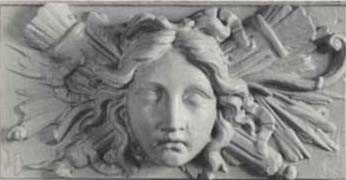
Detail of the tablet of Diana on the chimneypiece illustrated in fig. 1. (Philipse Manor Hall State Historic Site, Yonkers, NY. New York State Office of Parks, Recreation and Historic Preservation. Photo, Gavin Ashworth.)
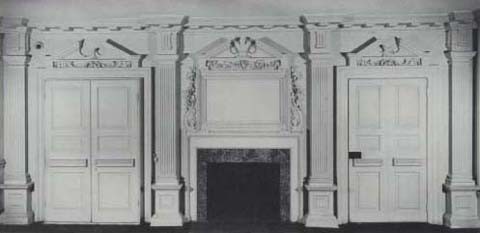
Second-floor southeast parlor, Philipse Manor. (Courtesy of Philipse Manor; Photo, Gavin Ashworth.)
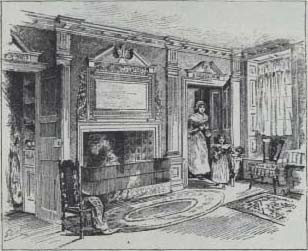
Engraving of the second-floor southeast parlor, Philipse Manor, from Frank Leslie's Illustrated Newspaper (1882). (Collection of the Hudson River Museum of Westchester, Yonkers, New York; photo, John Kennedy.)
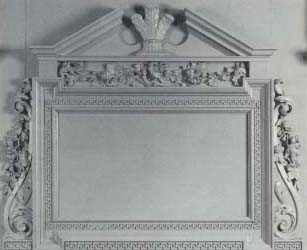
Detail of the chimneypiece illustrated in fig. 6. (Courtesy of Philipse Manor; Photo, Gavin Ashworth.)
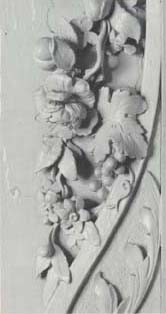
Detail of the left side bracket of the chimneypiece illustrated in fig. 6. (Courtesy of Philipse Manor; Photo, Gavin Ashworth.)
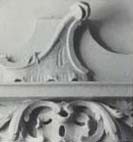
Detail of the frieze applique and ornament of the right door in fig. 6. (Courtesy of Philipse Manor; Photo, Gavin Ashworth.)
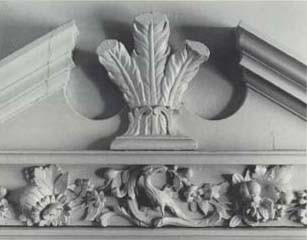
Detail of the frieze applique of the chimneypiece illustrated in fig. 6. (Courtesy of Philipse Manor; Photo, Gavin Ashworth.)
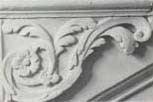
Detail of a carved stair bracket, Philipse Manor. (Courtesy of Philipse Manor; Photo, Luke Beckerdite.)
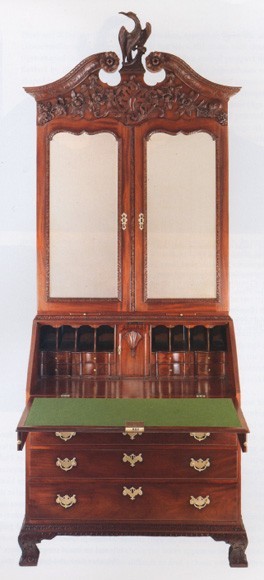
Desk-and-bookcase with carving attributed to Henry Hardcastle, New York, 1745-1755. Mahogany with tulip poplar and gum. H. 99 1/2", W. 45 1/2", D. 25". (Chipstone Foundation, acc. 1991.5; photo, Gavin Ashworth.)
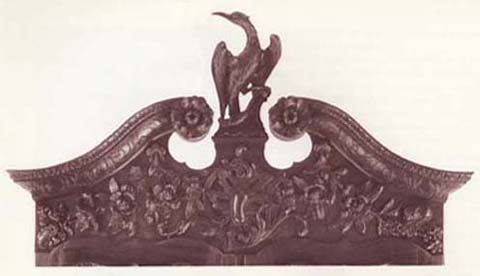
Detail of the pediment of the desk-and-bookcase illustrated in fig. 13. (Photo, Gavin Ashworth.) The heron, plinth, and applied carving flanking the outermost roses (approx. 6") were restored based on the carving in Philipse Manor.
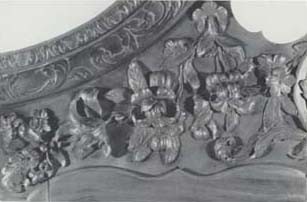
Detail of the applique on the pediment of the desk-and-bookcase illustrated in fig. 13. (Photo, Gavin Ashworth.)
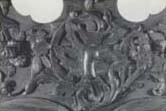
Detail of the applique on the pediment of the desk-and-bookcase illustrated in fig. 13. (Photo, Gavin Ashworth.)
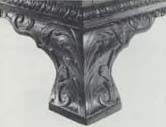
Detail of left front foot and base molding of the desk-and-bookcase illustrated in fig. 13. (Photo, Gavin Ashworth.)
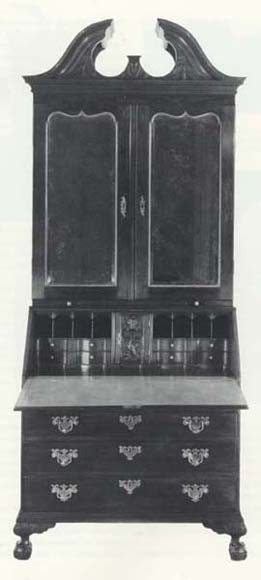
Desk-and-bookcase with carving attributed to Henry Hardcastle, New York, 1745-1755. Mahogany with tulip poplar, gum, oak, and mahogany. Dimensions not recorded. (Private collection; courtesy, Walton Antiques.)
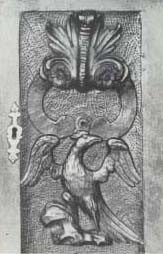
Detail of the prospect door of the desk-and-bookcase illustrated in fig. 18. (Private collection; courtesy, Walton Antiques.)
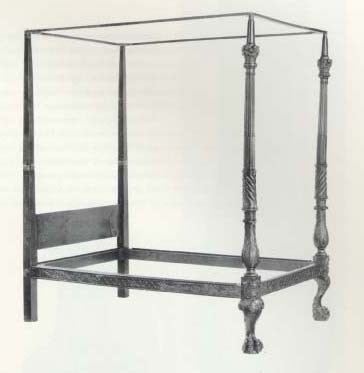
Bedstead with carving attributed to Henry Hardcastle, New York, 1750-1755. Mahogany with red oak and white pine (nineteenth-century lath frame and headboard). H. 89 1/2", W. 54 1/8", D. 78". (Courtesy of Historic New England/SPNEA, bequest of Janet M. Agnew, acc. 1975.152; photo, Richard Cheek.) During the late nineteenth or early twentieth century, the bedstead was reduced in width by 4-6 inches.
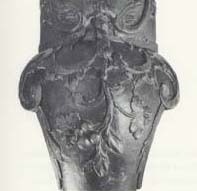
Detail of the knee carving on the bedstead illustrated in fig. 20. (Courtesy, Museum of Early Southern Decorative Arts.)

Detail of the carving on a side rail of the bedstead illustrated in fig. 20. (Courtesy, Museum of Early Southern Decorative Arts.)
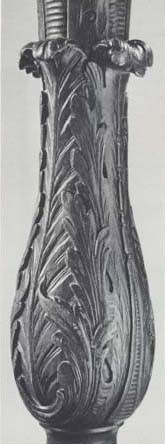
Detail of the urn acanthus on a foot post of the bedstead illustrated in fig. 20. (Courtesy, Museum of Early Southern Decorative Arts. )
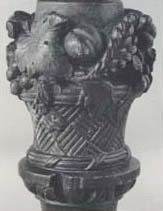
Detail of a basket capital on the bedstead illustrated in fig. 20. (Courtesy, Museum of Early Southern Decorative Arts.)
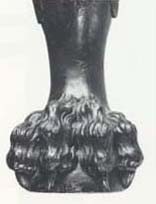
Front view of a paw foot of the bedstead illustrated in fig. 20. (Courtesy, Museum of Early Southern Decorative Arts.)
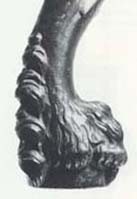
Side view of a paw foot of the bedstead illustrated in fig. 20. (Courtesy, Museum of Early Southern Decorative Arts.)
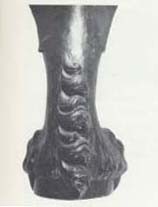
Back view of a paw foot of the bedstead illustrated in fig. 20. (Courtesy, Museum of Early Southern Decorative Arts.)
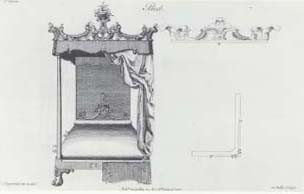
Plate 27 from Thomas Chippendale's The Gentleman and Cabinet-Maker's Director (1754, 1755). (Courtesy, Museum of Early Southern Decorative Arts.)

Fragment of a footpost with carving attributed to the shop of Henry Hardcastle, New York, 1745-1755. Mahogany. H. 44 1/2" (Private collection; photo, Luke Beckerdite.)
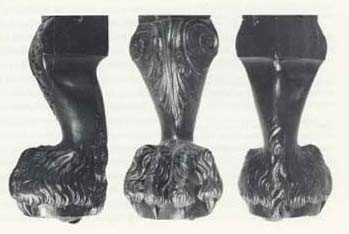
Side, front, and back views of the paw foot of the footpost illustrated in fig. 29. (Private collection; photo, Luke Beckerdite.)
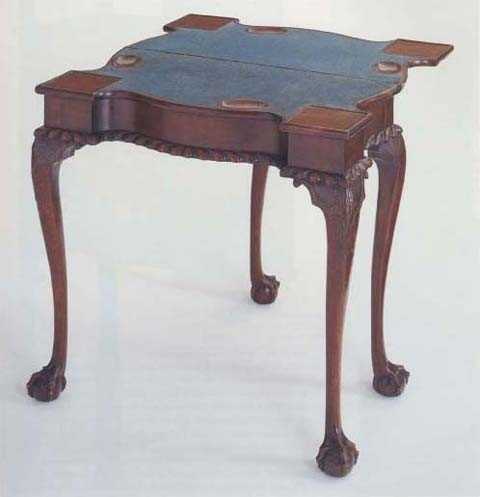
Card table with carving attributed to the shop of Henry Hardcastle, New York, 1750-1755. Mahogany with yellow pine. H. 28", W. 30", D. 15" (closed). (Chipstone Foundation, acc. 1965.5; photo, Gavin Ashworth.)
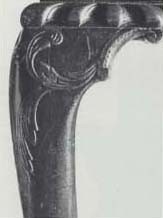
Detail of the knee carving and fluted and gadrooned molding of the card table illustrated in fig. 33. (Photo, Gavin Ashworth.)
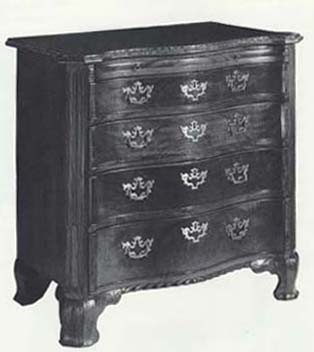
Chest of drawers with carving attributed to the shop of Henry Hardcastle, New York, 1750-1755. Mahogany with tulip poplar. H. 33", W 35 1/2", D. 20 3/4". (Courtesy, Winterthur Museum, acc. G54.86.)
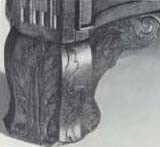
Detail of the left foot carving and fluted and gadrooned molding on the chest of drawers illustrated in fig. 35. (Courtesy, Winterthur Museum.)

Footposts of a bedstead with carving attributed to Henry Hardcastle, New York, 1750-1755. Mahogany. H. 94". (Chipstone Foundation, acc. 1991.4; photo, Gavin Ashworth.)
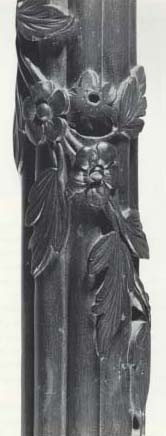
Detail of the carving on the footposts illustrated in fig. 37. (Photo, Gavin Ashworth.)

Detail of the carving on the footposts illustrated in fig. 37. (Photo, Gavin Ashworth.)
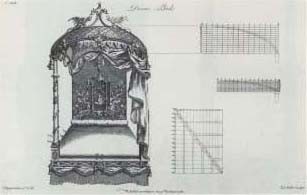
Plate 31 from Thomas Chippendale's The Gentleman and Cabinet-Maker's Director (1754,1755) (Courtesy, Museum of Early Southern Decorative Arts.)
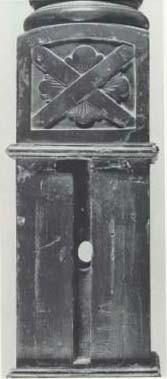
Detail of the mortises for a rail and spring rod on the footposts illustrated in fig. 37. (Photo, Gavin Ashworth.)
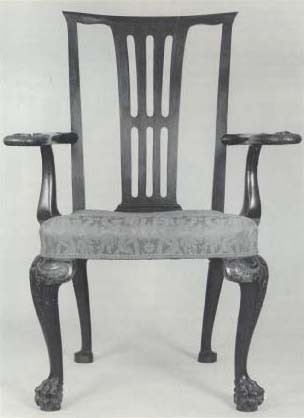
Armchair with carving attributed to the shop of Henry Hardcastle, Charleston, South Carolina, 1755-1756. Mahogany with sweet gum. H. 53 3/8", W, 37 5/8" (at arms). (Collection of The McKissick Museum, University of South Carolina; photo courtesy, Museum of Early Southern Decorative Arts.)
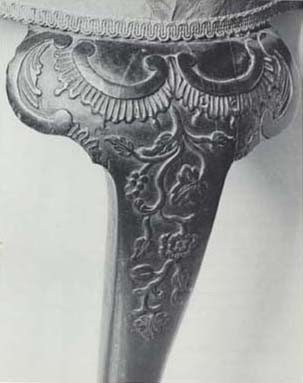
Detail of the knee carving on the armchair illustrated in fig. 42. (Collection of The McKissick Museum, University of South Carolina; photo courtesy, Museum of Early Southern Decorative Arts.)
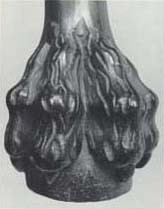
Front view of a paw foot of the armchair illustrated in fig. 42. (Collection of The McKissick Museum, University of South Carolina; photo courtesy, Museum of Early Southern Decorative Arts.)
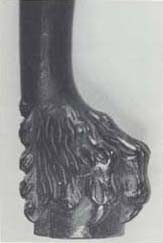
Side view of a paw foot of the armchair illustrated in fig. 42 (Collection of The McKissick Museum, University of South Carolina; photo courtesy, Museum of Early Southern Decorative Arts.)
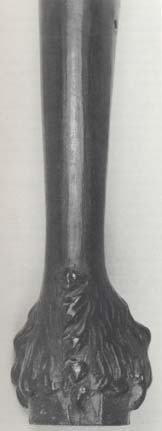
Rear view of a paw foot of the armchair illustrated in fig. 42. (Collection of The McKissick Museum, University of South Carolina; photo courtesy, Museum of Early Southern Decorative Arts.)
